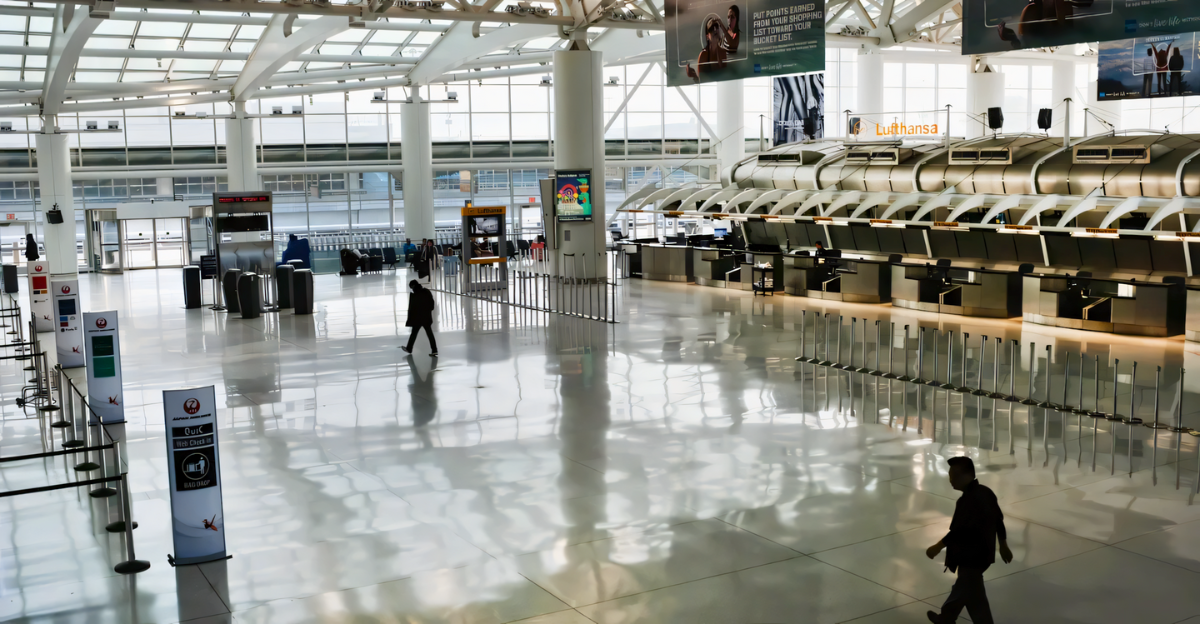
The United States is experiencing a clear and measurable decline in its dominance of the travel industry. This is a financial gut-punch, not hyperbole or economic scare tactics. The collapse of America’s inbound tourism industry is expected to cost up to $29 billion in 2025 alone, with repercussions for local economies, transportation, and hospitality. While other countries are setting new records, the United States, one of 184 economies, is seeing a complete drop in foreign visitor spending. This isn’t a statistical anomaly. Policy, perception, and the psychology of foreign tourists who are collectively opting to spend their money elsewhere are all contributing factors to this dramatic reversal.
Geopolitical tensions, shifting global alliances, and competitive destinations that have taken advantage of America’s current difficulties are some of the underlying factors that go beyond simple economic conditions. The effect spreads further into the service sectors that depend significantly on foreign visitors, escalating regional inequalities and compounding losses in sources of income that have historically been thought of as steady.
Boom to Bust: A Reversal in History

Due to its cultural, geographic, and economic allure, the United States has long prospered as a destination for millions of tourists from around the world. International visitor spending reached a peak of $217 billion in 2019, just a few years ago. By 2025, those figures have plummeted to $169 billion, a loss of more than 22% that is still rising. The stall was first explained by the COVID-19 pandemic, but now that the world is recovering, the United States is the only country experiencing further contraction. This reversal—a classic example of shooting oneself in the foot on the international scene—is structurally induced rather than accidental.
A fragmented approach to tourism promotion, inconsistent visa policies, and administrative delays are cited by numerous experts as major mistakes. Furthermore, the United States is no longer as flexible as it once was due to heightened competition from emerging markets and changing consumer preferences for more sustainable and immersive travel.
The Wrecking Ball of Policy

Let’s face it: the core of this catastrophe is policy. The U.S. government has increased travel restrictions, visa requirements, and rhetoric that tells foreign visitors that the country is “closed for business” in recent years. Restrictive entry policies, divisive political messaging, and unpredictable border practices have created negative sentiment, particularly among Western Europeans and Canadians, who are traditionally the highest-spending visitor segments, according to numerous reports. The expected outcome? In 2025, there will be a 20% decrease in visitors from Canada and almost 5% from Europe, with drops of up to 42% at some crossings.
In addition to causing uncertainty and discouraging return visits, these policies have an impact on international business and academic exchanges as well as leisure travel. Furthermore, by undermining America’s reputation as a friendly and open nation, such strict policies exacerbate long-term harm that may take years to remedy.
The Impact on the Economy — Not Just Hotels

This drain is not unique to landmarks and theme parks. A slow-rolling economic hemorrhage is affecting small-town gas stations, hotels, restaurants, and even airlines. The $29 billion amount is multiplied by lost jobs, lower tax revenue, and threatened small businesses—a 1% decrease in arrivals results in hundreds of millions of dollars in lost revenue. Local economies from New York to Nevada would collapse if the industry, which accounts for 9% of GDP and up to 20 million jobs nationwide, were to disappear. You experience it most acutely if your livelihood is dependent on service.
Economic instability is further exacerbated by the multiplier effects, which reach a wide range of supplier industries, such as food production, maintenance services, and transportation infrastructure. Many American communities rely heavily on thriving tourism, as these cascading losses demonstrate, underscoring the urgent need for targeted economic assistance and policy recalibration.
International Differences — The Reasons the World Is Winning

The rest of the world rises while America shrinks. Countries in Asia, Latin America, and Europe have made a concerted effort to meet the slack in demand for travel by implementing welcoming narratives, marketing campaigns, and simplified visa procedures. In contrast, the United States is clearly the world’s biggest loser in terms of tourism this year. The data clearly shows that while more than 180 countries are gaining, only America is losing ground. Economic fortunes quickly change when people choose to avoid your brand; this is not the 1980s.
To draw in a new generation of tourists, several up-and-coming locations are making significant investments in digital experiences, infrastructure, and cultural preservation. This assertive worldwide turn signals a change in the geopolitical and economic power that was previously wielded through tourism diplomacy and worsens America’s decline in market share.
Unexpected Angles: The Impact of Tourism on Technology and Real Estate

The tourism industry is not an isolated sector. Real estate (vacation rental markets are drying up), educational institutions (families are rethinking college visits), and even U.S. tech giants are feeling the effects of this collapse. What starts as fewer hotel nights soon spreads to reduced digital ad spending, a decline in rideshare demand, and fewer short-term leases. These second- and third-order effects—an American retreat from the global stage—are as real as they are underreported. They are felt in both Midwest Main Streets and Silicon Valley boardrooms.
Numerous small businesses and local economies that depend on the influx of foreign tourists are impacted by the ripple effect, which has broader socioeconomic repercussions such as a decline in diversity and cross-cultural interaction. Additionally, innovation hubs that depend on international talent and tourism-driven economic stimuli are under pressure from the downturn.
Contrarian Facts: Not Everyone Is Saved by Domestic Surge

The obvious counterargument is the surge in domestic travel. It’s a shortsighted move. Indeed, domestic spending has reached all-time highs, and Americans are traveling more within their own country. However, because foreign visitors stay longer and spend roughly four times as much per trip, the international market is particularly profitable. Domestic surges do nothing for gateway cities or upscale locations that are typically dependent on foreign tourists, and they conceal the structural deficit caused by absent foreign visitors.
In addition to quantity, there is a strategic quality deficit—a decline in global brand equity that cannot be compensated for by domestic spending. Furthermore, the international business networks and cultural capital that are developed by tourists from other countries cannot be replaced by domestic travel. The absence of foreign spending reduces the U.S.’s competitive advantage in international tourism as well as chances for cross-border investments.
The Collapse of Niagara

Do you want a concrete example? Take a look north. Devastating declines are evident in U.S. border towns near Niagara Falls, which were once teeming with foot traffic from Canada. Land crossings have decreased by as much as 42%, leading to attraction layoffs and small business closures. Particularly in areas where tourism is essential, these microeconomic catastrophes add up to a macroeconomic threat.
The fact that entire communities deteriorate when tourists stop coming is empirical evidence, not theoretical. Local governments deal with shrinking tax bases, less money for public services, and a decline in the vibrancy of their communities. The slow pace of policy reform and ingrained economic reliance on tourism present significant obstacles to recovery efforts.
Beyond Economics: National Image & Soft Power

Loss of tourism is more than just financial. America’s worldwide soft power is being undermined by its waning appeal. Every guest who is turned away, delayed, or irritated represents a lost ambassador and a chance for future diplomatic goodwill, business partnerships, or cultural exchange. Negative border experiences spread via digital word-of-mouth, resulting in a vicious cycle of deteriorating reputation. America’s closed-door signals send a strong, perilous message in a world where perception shapes reality: it’s difficult to win people over or secure investment when your first response is “Go Away.”
Decades of public diplomacy initiatives and cultural outreach initiatives that have traditionally strengthened America’s position in the world are under threat from this intangible loss, which exacerbates material harm and jeopardizes American influence in international affairs.
Take Action or Admit Refusal

The strategic reality is that the tourism exodus will continue unless America changes its strategy, which will further harm its economy and reputation. The United States is in an unprecedented state of decline due to blunt policies, a disregard for global sentiment, and complacency in the face of international competition. The $29 billion drain is a warning, not an exception. Even more devastating could be the second- and third-order effects, which include irreversible declines in economic dynamism, lost tax revenue, diminished soft power, and eroded competitiveness.
The spiral will continue until the United States realizes that welcoming the world is a national self-interested move. Reversing this decline and making the United States a top travel destination and economic powerhouse again will require strategic reforms, bipartisan cooperation, and a thorough rebranding effort.